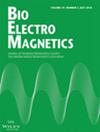下载PDF
{"title":"人体植入物的剂量学电磁安全:一个被忽视的人群?","authors":"Lena Kranold, Jingtian Xi, Tolga Goren, Niels Kuster","doi":"10.1002/bem.70023","DOIUrl":null,"url":null,"abstract":"<p>Electromagnetic (EM) safety guidelines are designed to protect the general public and workers from the risks posed by exposure to EM sources of all types, with the exception of medical EM sources. However, it has never been systematically evaluated whether individuals with conductive implants are also protected by these guidelines or whether the local field enhancement due to presence of the implant may pose an unacceptable risk under certain realistic exposure conditions. To address this important knowledge and regulatory gap, we first evaluated the upper bound of the local enhancement of bare and insulated generic implants of 0.5 <i>λ</i> (approximately equal to resonant) and 0.1 <i>λ</i> lengths, but restricted the maximum length to 2 m, as a function of tissue properties and frequency (10 kHz to 1 GHz). Results for uniform electric field excitation showed local enhancement of psSAR<sub>10mg</sub> and of locally averaged E-field, respectively, compared to the background in the presence of a generic implant of 10 dB (1 GHz) to over 100 dB at frequencies under 100 MHz. In the next step, we tested the hypothesis that fields induced inside the human body by realistic near-field sources are not sufficiently uniform to generate results in enhancement that could pose unacceptable risk. Common implant trajectories were inserted into the Virtual Population human anatomical model Ella V3.0, and the model was exposed to the following conditions (i) a standard source representing a wireless power transfer source operating at 85 kHz and (ii) a dipole source that operates at 450 MHz within the current exposure limits. Results show that the safety limit is exceeded at the tip of the implant by a factor of <i>> </i>10 ( > 20 dB) or <i>> </i>115 V/m at 85 kHz, whereas the locally induced specific absorption rate averaged over 10 mg at 450 MHz was 7.9 W/kg, resulting in a temperature increase after 6 min of <i>< </i>0.4 K. Hence, as the hypothesis was falsified at frequencies <i>< </i>450 MHz, patients with implants are inadequately protected by current safety and product guidelines. In the discussions, proposals for how to close this regulatory gap are provided. Bioelectromagnetics. 00:00–00, 2025. © 2025 Bioelectromagnetics Society.</p>","PeriodicalId":8956,"journal":{"name":"Bioelectromagnetics","volume":"46 6","pages":""},"PeriodicalIF":1.2000,"publicationDate":"2025-09-25","publicationTypes":"Journal Article","fieldsOfStudy":null,"isOpenAccess":false,"openAccessPdf":"https://onlinelibrary.wiley.com/doi/epdf/10.1002/bem.70023","citationCount":"0","resultStr":"{\"title\":\"Dosimetric Electromagnetic Safety of People With Implants: A Neglected Population?\",\"authors\":\"Lena Kranold, Jingtian Xi, Tolga Goren, Niels Kuster\",\"doi\":\"10.1002/bem.70023\",\"DOIUrl\":null,\"url\":null,\"abstract\":\"<p>Electromagnetic (EM) safety guidelines are designed to protect the general public and workers from the risks posed by exposure to EM sources of all types, with the exception of medical EM sources. However, it has never been systematically evaluated whether individuals with conductive implants are also protected by these guidelines or whether the local field enhancement due to presence of the implant may pose an unacceptable risk under certain realistic exposure conditions. To address this important knowledge and regulatory gap, we first evaluated the upper bound of the local enhancement of bare and insulated generic implants of 0.5 <i>λ</i> (approximately equal to resonant) and 0.1 <i>λ</i> lengths, but restricted the maximum length to 2 m, as a function of tissue properties and frequency (10 kHz to 1 GHz). Results for uniform electric field excitation showed local enhancement of psSAR<sub>10mg</sub> and of locally averaged E-field, respectively, compared to the background in the presence of a generic implant of 10 dB (1 GHz) to over 100 dB at frequencies under 100 MHz. In the next step, we tested the hypothesis that fields induced inside the human body by realistic near-field sources are not sufficiently uniform to generate results in enhancement that could pose unacceptable risk. Common implant trajectories were inserted into the Virtual Population human anatomical model Ella V3.0, and the model was exposed to the following conditions (i) a standard source representing a wireless power transfer source operating at 85 kHz and (ii) a dipole source that operates at 450 MHz within the current exposure limits. Results show that the safety limit is exceeded at the tip of the implant by a factor of <i>> </i>10 ( > 20 dB) or <i>> </i>115 V/m at 85 kHz, whereas the locally induced specific absorption rate averaged over 10 mg at 450 MHz was 7.9 W/kg, resulting in a temperature increase after 6 min of <i>< </i>0.4 K. Hence, as the hypothesis was falsified at frequencies <i>< </i>450 MHz, patients with implants are inadequately protected by current safety and product guidelines. In the discussions, proposals for how to close this regulatory gap are provided. Bioelectromagnetics. 00:00–00, 2025. © 2025 Bioelectromagnetics Society.</p>\",\"PeriodicalId\":8956,\"journal\":{\"name\":\"Bioelectromagnetics\",\"volume\":\"46 6\",\"pages\":\"\"},\"PeriodicalIF\":1.2000,\"publicationDate\":\"2025-09-25\",\"publicationTypes\":\"Journal Article\",\"fieldsOfStudy\":null,\"isOpenAccess\":false,\"openAccessPdf\":\"https://onlinelibrary.wiley.com/doi/epdf/10.1002/bem.70023\",\"citationCount\":\"0\",\"resultStr\":null,\"platform\":\"Semanticscholar\",\"paperid\":null,\"PeriodicalName\":\"Bioelectromagnetics\",\"FirstCategoryId\":\"99\",\"ListUrlMain\":\"https://onlinelibrary.wiley.com/doi/10.1002/bem.70023\",\"RegionNum\":3,\"RegionCategory\":\"生物学\",\"ArticlePicture\":[],\"TitleCN\":null,\"AbstractTextCN\":null,\"PMCID\":null,\"EPubDate\":\"\",\"PubModel\":\"\",\"JCR\":\"Q3\",\"JCRName\":\"BIOLOGY\",\"Score\":null,\"Total\":0}","platform":"Semanticscholar","paperid":null,"PeriodicalName":"Bioelectromagnetics","FirstCategoryId":"99","ListUrlMain":"https://onlinelibrary.wiley.com/doi/10.1002/bem.70023","RegionNum":3,"RegionCategory":"生物学","ArticlePicture":[],"TitleCN":null,"AbstractTextCN":null,"PMCID":null,"EPubDate":"","PubModel":"","JCR":"Q3","JCRName":"BIOLOGY","Score":null,"Total":0}
引用次数: 0
引用
批量引用


 求助内容:
求助内容: 应助结果提醒方式:
应助结果提醒方式:


